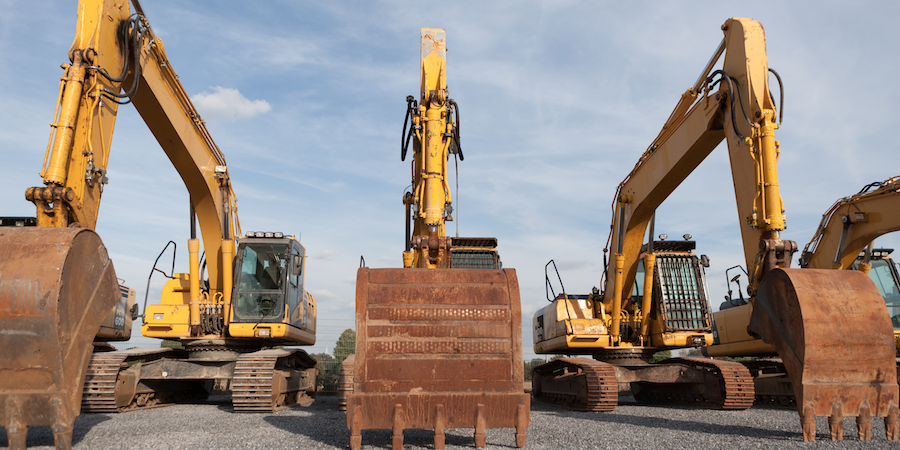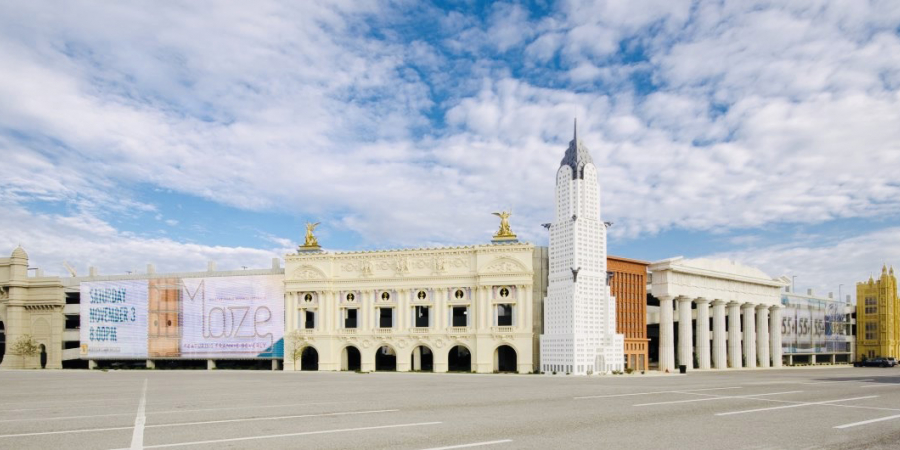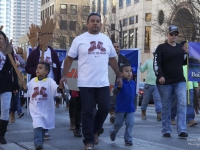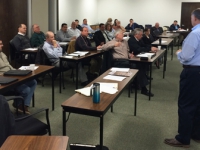Hundreds marched through downtown Austin in Febuary to honor the men and women who have died in the Texas construction industry. The event was organized by Workers Defense Project and drew statewide support.“It is heartbreaking that Texas remains the deadliest state in the country to work in construction. Workers Defense will keep organizing, marching, and taking action until our elected officials stand with the working families they represent,” said Cristina Tzintzún, Executive Director of Workers Defense Project.“We are here today because the hands that build Texas in this deadly industry also feed families. It doesn’t have to be this way -- the Texas construction industry can be safe. But our elected officials must take action,” said Tzintzún.
Reshaping the Construction Industry
PPIs in February, prospective prices are mixed; industry execs expect increased activityEditor’s note: Construction Citizen is proud to partner with AGC America to bring you AGC Chief Economist Ken Simonson's Data DIGest. Check back each week to get Ken's expert analysis of what's happening in our industry.The producer price index (PPI) for final demand decreased 0.3%, not seasonally adjusted (-0.5%, seasonally adjusted), in February and 0.6% over 12 months, the Bureau of Labor Statistics (BLS) reported Friday. AGC posted an explanation and tables focusing on construction prices and costs. Final demand includes goods, services and five types of nonresidential buildings that BLS says make up 34% of total construction. The PPI for final demand construction, not seasonally adjusted, rose 0.2% in February and 2.0% over 12 months. The overall PPI for new nonresidential building construction—a measure of the price that contractors say they would charge to build a fixed set of five categories of buildings—climbed 2.0% since February 2014. The 12-month increases ranged from 1.0% for healthcare construction to 1.7% for schools, 2.1% for industrial buildings, 2.2% for warehouses, and 2.5% for offices.
March 16, 2015
The following article originally appeared in the March newsletter to clients of Kiley Advisors, LLC. Reprinted with permission.The benefits of interval training, where periodically you speed up and then slow down again, are proven to enhance athletic performance and overall health, no matter whether the athlete is a cyclist, runner, canoer, skater or walker. In fact, there is a new study that validates that interval walking is the best exercise for most people who want to stay both healthy and trim.Can interval markets produce the same benefits for commercial construction companies? The greater Houston commercial construction market has certainly been in the “speed up cycle” of the interval since 2012, and now it will enter the “slowdown cycle” for a couple years. Can this pattern allow companies to stay fit with steady and reasonable profitability? Can they stay trim with no excess expenses, but with enough additional funds to invest in talent and technology? And in this more staggered and cyclical environment, can companies meet their strategic growth goals over a normal strategic planning horizon of 3-5 years?
March 13, 2015
Construction Citizen has followed model and entrepreneur Jessica Minh Anh's unique presentation of high fashion and architecture as part of its panorama of the construction industry. In June 2014, J Model Management made history by turning America's tallest skyscraper and new symbol of hope, One World Trade Center, into a sky high catwalk. The fashion show was hosted on the 63rd floor of the newly built iconic tower. Next week, Construction Citizen will be present for the action as the global fashion sensation transforms the Hudson River's giant glass boat into a 100-meter floating runway.Guests will be seated facing the multi-faceted glass window and watch models walking in front of them using the river as their runway. Thanks to the panoramic view from the boat, New York's famous skyline and its architectural and construction masterpieces such as the Brooklyn Bridge, Statue of Liberty, and One World Trade Center, will be the iconic backdrop for the sensational catwalk.
March 12, 2015
Construction in the United States faces a challenge that’s been at the center of an ongoing discussion for most of my career in the industry. But, the challenge of sustaining a workforce has grown from a mere nuisance into a problem that could threaten the viability of recently announced projects. More importantly, it could stand in the way of our country’s ability to reclaim its rightful position as the world leader in manufacturing. It is shameful that we have not held that position in two decades.The ABC board of directors in Houston recognizes the importance of tackling this problem head-on. That’s why ABC’s Industrial Committee will look into opportunities and recommend board action on the issue of the availability of qualified construction craft professionals and the need for coordinated workforce development in the Greater Houston Area.
March 12, 2015
If you get motion sickness, don’t go to the 108-story Willis (Sears) Tower in Chicago on a windy day. The building sways so much that, not only will you get motion sickness, the elevator that you are riding in might get shut down or stuck in the shaft until the wind subsides. This, according to Justin McGar in a recent posting in Sourceable, is but an indicator of the design and engineering issues related to tall towers and the elements.There are a wide variety of solutions that engineers apply to the newer designs for motion damping, including the use of stiffening or core design or mass and tuned liquid dampers that quiet the motion by acting as a counter balance to the pressures and motion of the wind.Other buildings can induce added motion for buildings by creating a vortex that increases the speed of the wind as it hits the buildings around it. Proximity becomes a factor especially when tall buildings are clustered in cities like Chicago where wind is a constant.One of the most important professionals involved in the design team for tall buildings has become the wind engineer. For the tall buildings being built these days, wind-engineers work side-by-side with the architects to tweak designs in order to counter the wind effects and reduce the sway, and ultimately, reduce the cost of those systems and the core and shell of the buildings.
March 11, 2015
As many of you may be aware, the Construction Career Collaborative (C3) began in late 2009 when a small group of leaders met to discuss the ominous signs of a looming craft worker shortage. From that meeting, a vision was crafted that not only addressed the future workforce needs of our industry, but also included a plan that engaged all participants in the construction process, beginning with the construction owner.Since that meeting, a lot has been done, and much is going on, but the real work is just beginning. A board of directors was formed. A mission and principles were adopted. Bylaws were written. Committees of volunteers, who enthusiastically endorsed the mission and principles of C3, were created and many great ideas were generated and developed. Beta projects were identified and then built.
March 10, 2015
Construction employment hits six-year high; Beige Book finds mixed conditionsEditor’s note: Construction Citizen is proud to partner with AGC America to bring you AGC Chief Economist Ken Simonson's Data DIGest. Check back each week to get Ken's expert analysis of what's happening in our industry.Nonfarm payroll employment increased by 295,000 in February, seasonally adjusted, and by 3,296,000 (2.7%) over 12 months, the Bureau of Labor Statistics (BLS) reported on Friday. Construction employment rose by 29,000 for the month and 321,000 (5.3%) over the year to 6,353,000, the highest total since February 2009. Residential construction employment (residential building and specialty trade contractors) climbed by 16,700 for the month and 167,800 (7.4%) over 12 months. Nonresidential employment (building, specialty trades, and heavy and civil engineering construction) increased by 12,000 in February and 153,400 (4.1%) year-over-year. Employees are working longer hours: average weekly hours in construction in February totaled 39.6 hours, the highest figure since the series began in March 2006.
March 09, 2015
I remember the first time I crossed a strike picket line. It was at a construction site for a Holly Sugar Beet processing plant in Hereford, Texas. The electricians union who wanted higher pay for their workers called the strike. The picket line was comprised of my neighbors who I carpooled the 90 miles to the construction site with most days. Once they struck, they refused to give me a ride and were suddenly calling me a scab even though I worked in the engineer’s office on the drafting board. Serious stuff for them. Scary for me. Shut down the site for a week. That was then, this is now.Today, members of the United Steel Workers (USW) are on a five-week strike at several of the major refineries in the country while the negotiators work to replace the “three year collective bargaining agreement that expired at the beginning of February”. The strike action is over what the unions call unfair labor practices (ULP) claiming that the industry has neglected the “health and safety” of their workers.
March 09, 2015
One of the coolest things afoot in Silicon Valley is the new Google headquarters building, if you can call it a building; it's more a living environment. The company has announced it is venturing into robotics, and the new headquarters will use robots, no, “Crabots” to be able to reconfigure the spaces overnight once the original buildings are complete.
March 06, 2015



.jpeg?itok=6uFZXEBH)





.jpeg?itok=4Vi_1nJG)
































